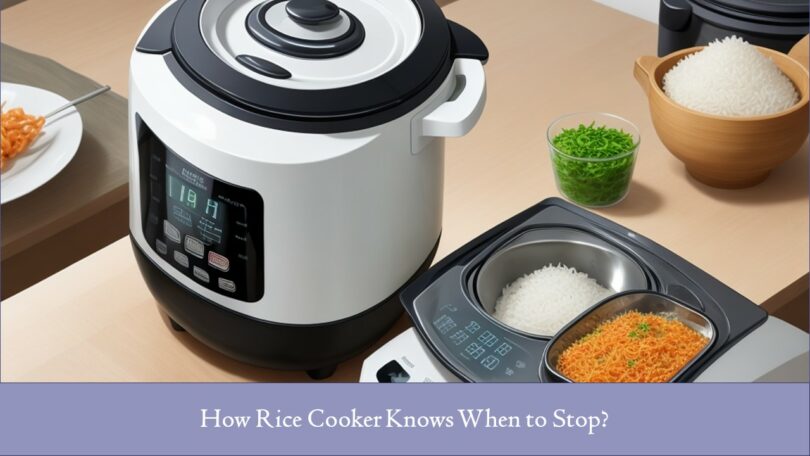The humble rice cooker is a marvel of culinary efficiency, a testament to human ingenuity in automating a universal cooking challenge: preparing the perfect rice. It’s a kitchen mainstay in millions of households, faithfully turning out pot after pot of fluffy rice without so much as a hint of burning or undercooking. But behind its simple exterior lies a question that piques the curiosity of many: How does a rice cooker know when to stop cooking?
The Simple Science Behind the Perfect Rice
At the heart of a rice cooker’s ability to self-regulate is a basic scientific principle related to water’s boiling point. Rice cooking is, at its core, a water-absorption method where rice grains soak up water until tender. The rice cooker’s main function is to boil water, and it’s the behavior of this boiling water that signals when the rice is ready.
>> Explore The Best Rice Cooker Deals on Amazon
The Mechanics of Cooking: It’s All About Temperature
When you start the rice cooker, the inner pot begins to heat up through its electric heating plate. The water inside the pot remains at a steady boiling point of 100°C (212°F), as long as there’s water to be boiled. The rice cooker’s main job during this time is to maintain this constant temperature. The secret to its timely conclusion lies not in timers or complex sensors but in a simple, yet clever, thermostat.
Thermal Sensing: The Cooker’s Built-In ‘Brain’
This thermostat, often called a thermal sensor, sits at the bottom of the rice cooker. It’s designed to detect a very specific temperature shift. Once the rice absorbs all the water and rises above the boiling point of water, the temperature inside the pot begins to increase. This is the critical cue. The thermal sensor detects this temperature increase and triggers the switch from ‘cook’ to ‘warm’, effectively ending the cooking process.
The Role of the Thermostat: Precision and Safety
The thermostat serves a dual purpose: it ensures precision in cooking and safety for the user. By carefully monitoring the temperature, it prevents the rice cooker from overheating, which could lead to burned rice or even fire hazards. This component is a prime example of how rice cookers are designed with user safety in mind.
Fine-Tuning for Different Rice Varieties
Not all rice is created equal, and rice cookers are well aware of this culinary fact. The cooking times and water-to-rice ratios may vary, but the fundamental sign that rice is done does not. Whether it’s brown rice requiring more water and a longer cooking time or white rice that’s done in a jiffy, the rice cooker adjusts its cycle based on the temperature change, not the clock.
Maximizing Your Rice Cooker’s Potential
Understanding how your rice cooker works is more than just a lesson in kitchen gadgetry—it’s the key to unlocking its full potential. By knowing what it’s designed to do, you can experiment with different types of rice and dishes, confident that your rice cooker will handle the basics of timing and temperature control.
Conclusion: The Rice Cooker, a Paragon of Practical Engineering
In conclusion, rice cookers are the epitome of practical engineering, designed to take the guesswork out of one of the most common cooking tasks. By leveraging the simple science of boiling water and the precise reaction of a thermostat, they provide an invaluable service: perfect rice every time. So next time you click that button to start your rice cooker, take a moment to appreciate the intricate simplicity that ensures your culinary success.








Leave a Comment